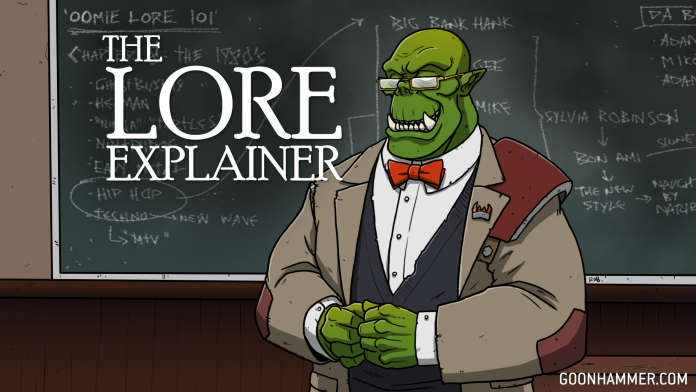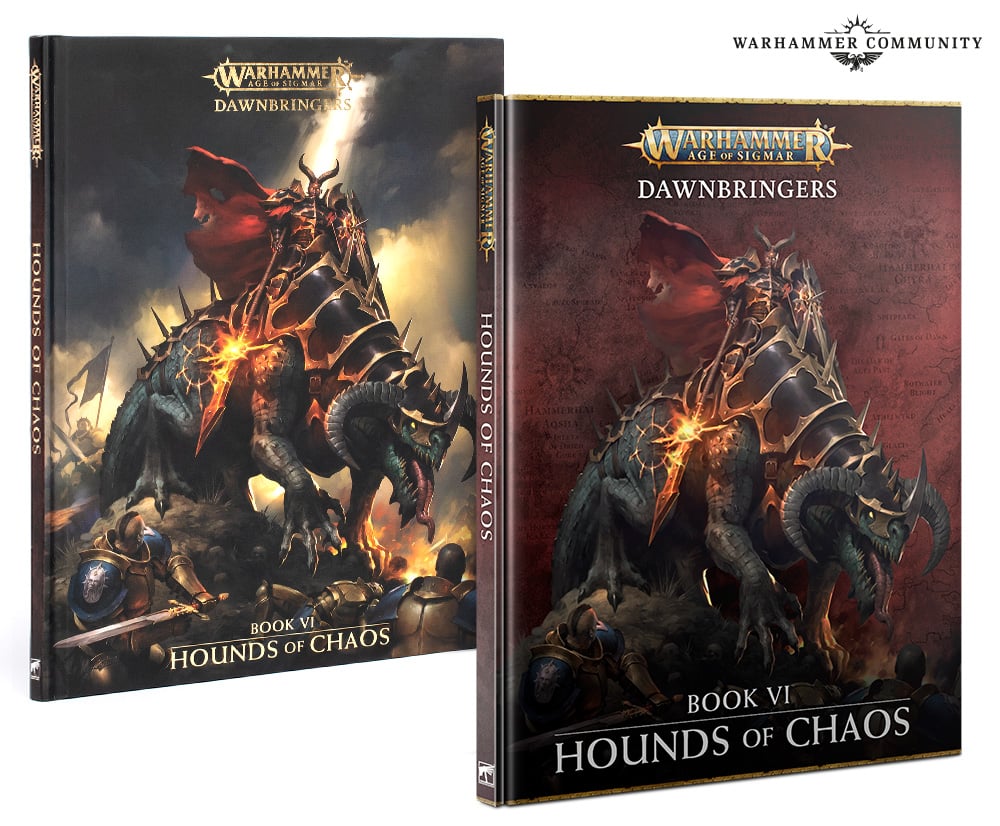
With the 4th edition of Age of Sigmar about to erupt into our realm, Dawn Bringers V: Hounds of Chaos draws the lore of 3rd edition to a close. It concludes the story of the Twin-Tailed Crusades, two massive city-planting missions that left from their respective halves of Hammerhal, the sprawling inter-realm mega-city, to found two new Sigmarite settlements in Ghyran and Aqshy.
Until now, crusades were smaller affairs and as such often failed. But the twin-tailed crusades were massive, tying up huge amounts of Hammerhal’s resources. Both tails of the crusade faced equally massive opposition along their way. One half left Hammerhal Aqsha to try its luck among the Khorne-dominated, battle-scorched wastelands of the realm of fire, and the other, originating from Hammerhal Ghyra, set off into the Nurgle-corrupted, vigorous, putrefying swamps and forests of the realm of life.
The following article contains spoilers!
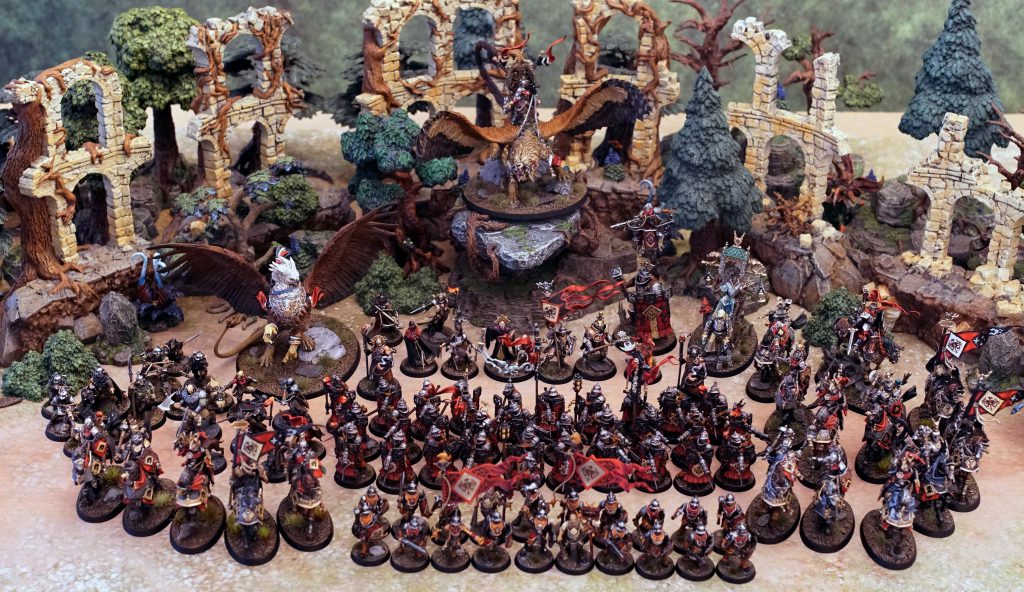
Ghyran
Having struggled through Nurgle’s forces, King Brod’s gargants, ogors performing some strange ritual among the remains of Behemat, a bonereaper legion, and even a brush with Usheron and his Flesh Eater Courts, the Ghyran tail of the crusade finally found somewhere it could set up camp. As the city began to take root, so did its leader, Iscilla Thorian, whose latent life magic saw her gradually bloom into some kind of plant woman.
Thorian is a great character. She’s been one of the more intriguing characters of the whole series, and had a great story arc. Whilst she does get a nice page at the end of the book to round her story off – and this is very well done – on the whole she’s just, sort of, there. Indeed, that’s how this book functions: The characters and ideas we’ve explored through the past five books are just, sort of, there in this one. (With the exception of the Kragnos story thread… that’s not even there at all. They just gave up on that one.) The book doesn’t really add very much of anything to the past five books; it just name checks the main characters and events and moves on. Verdigris and Embergard, the two cities that result from the crusades, basically just fade into the background.
Cities go up pretty easily in Age of Sigmar; they’re basically just huge, floating prefabs. But they also come down pretty easily too. Like a toddler watching their parent build a tower of blocks, Archaon waited until the new city, Verdigris, had just about managed to establish its defenses and erect its protective idols before deciding he’d be having none of that. He sent his right-hand-woman, the Spear of Archaon herself, Abraxia, to smash it all to bits.
Abraxia commands the Swords of Chaos, a merciless force of Archaon’s strongest Varanguard. Her own Path to Glory was a brutal one, murdering all those who dared get in her way on the way to the top. Her bare-faced ambition and callousness earned her the favour of Archaon who promoted her and gifted her Gorbolga, her mutation-inducing spear, that we see impaling plenty of unsuspecting Sigmarites throughout the book, and them suddenly bursting into tentacles as it does.

Out of nowhere, Abraxia fell upon Verdigris, and it wasn’t even close to being a fair fight. The city had spent so much to get to where it was, and not enough time had passed for it to recover properly from its grueling journey and properly establish itself. The only resource they had available to them, which until now had been a burden rather than a resource, was a group of insance troops, driven mad by the Flesh Eater Courts delusions from their previous encounters.
Sending them out to battle resulted in Abraxia becoming infected with the delusion to the point where she started hacking into her own troops and hallucinating pegasi. Still, her force was just too strong for the Cities forces and it all looked pretty grim for Verdigris. Abraxia’s invasion decimated the outer precincts and was soon to breach the heart of the city. However, as Abraxia cut down trees to make her war machines, the destruction of the natural world attracted the attention of Belthanos and his hunt.
Suddenly an army of angry twigs, riding bugs, swarmed out of the woods and started tearing through Abraxia’s forces. While some of her warriors chose to remain and fight, Abraxia sounded the retreat and fell back to consult Archaon.
Archaon then sent Abraxia to destroy Phoenicium, suggesting that the flame of the Ur-Phoenix could cure her FEC induce maddness. This part of the book feels like a bolt-on of convenience to explain the removal of Phoenix Guard from the range. It has nothing to do with the Dawnbringer Crusades. However, when reading any book you must always be aware of the genre of the book you’re reading; you wouldn’t read a cook book in the same way you would read Chaucer. This, like all Games Workshop books, is primarily a book to sell models. In that respect it has more in common with the Argos Catalogue than Lord of the Rings.
That’s not to say these books can’t be good reads, and even contain some very worthy literature, art and philosophy; it’s just to say that ultimately, they’re here to serve the model range. And that becomes rather obvious here. Having said that, once the nasty jolt in narrative is over with, the Phoenix story was really well done.
Inside the city of Phoenicium, the humans were getting twitchy. The aelves of the Phoenix Guard were becoming more reclusive and were clearly up to something. Lumineth were entering the city in large numbers, including the Lumineth war-sages Ellania and Ellathor.
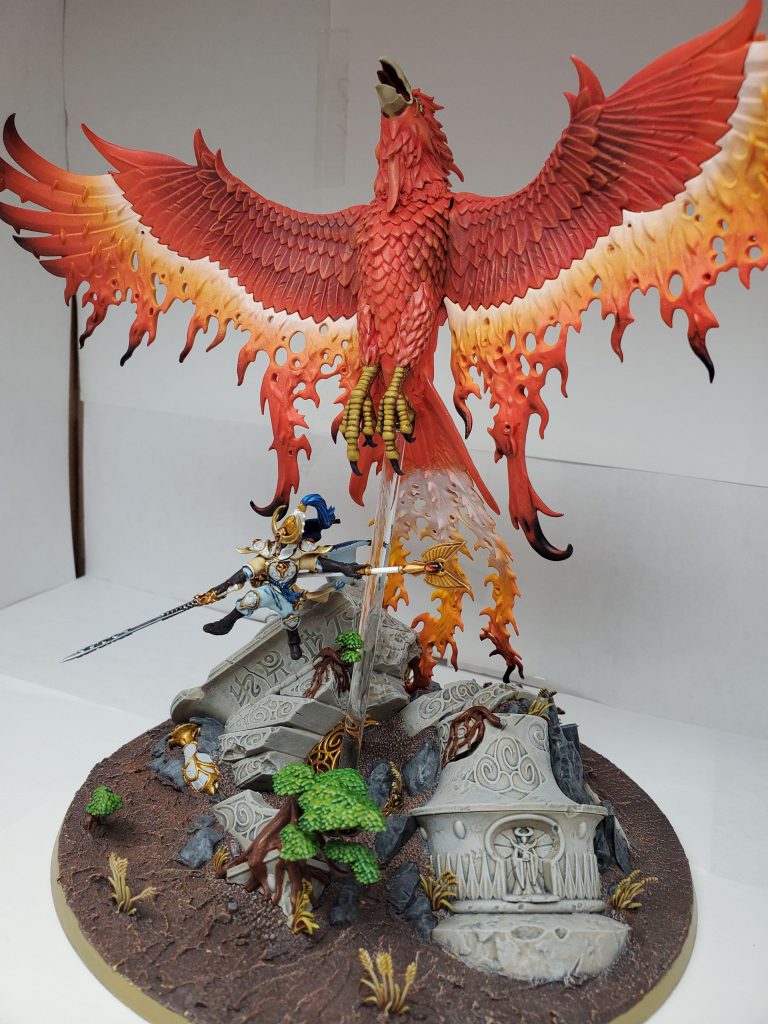
What happened at Anvilgard, when Morathi and her aelven followers staged a coup to take over the city, was still in relatively recent memory. Were these duplicitous aelves up to the same thing here?
Since the last Cities of Sigmar battletome came out, we’ve seen the faction become a lot more human-focused. One of the interesting angles of Cities has been the unity of the classic fantasy races, but it’s also an interesting narrative angle to see the cracks beginning to show in the very foundations of the faction. United we stand, divided we fall and all that. Sure, once again, it’s probably something to do with model ranges moving over to The Old World, but there’s still an interesting narrative angle to be had.
But then all was revealed, and the city learned the hard way what has been going with the aelves: They had been preparing for war. Abraxia fell upon Phoenicium, and it was a total slaughter. Some sort of unspecified magic flying vortex type thing (which for some reason she didn’t use at Verdigris) allowed her and the Swords of Chaos to bypass all of the city’s defenses and massacre everything within.
Torelith, chosen champion of of the Phoenix Guard, put up a valiant fight to defend his people and his home, but upon cutting open the side of Abraxia’s mount Thanatorg he was covered in acidic blood and fell from the sky, smashing into the temple guarding the Phoenix Flame. Inside the temple, Torelith and the twins knew that the end was coming, and hatched their own twin-tailed plan to try and save the Flame of the Ur-Phoenix.
First, Torelith imbibed the flame and used its powers to try and fight off Abraxia, but after a raging punch-up in the centre of the temple, Abraxia stood victorious. With the death of Torelith came the end of Phoenecium and the whole order of the Ur-Phoenix. Upon hearing news of the fall of Phoenicium and the Phoenix Guard, all across the realm aelves of the order either retreated into obscurity or marched out into unwinnable, desperate final battles, so that their warscrolls might vanish from the app in a blaze of glory.
Abraxia feasted on Torelith’s flesh and the remnant of the ur-Phoenix flame within it, hoping that its power might cure her of her madness. Archaon points out, “Nah mate, you’re still crazy; this’ll just keep it at bay for now.”
Abraxia’s forces scoured the lands around the city to make sure that every last trace of the Phoenix Guard were wiped out, but they never found Ellania and Ellathor, who slipped out through the woods, Ellania cradling a tiny, flickering flame in her hands.
This is actually a really nice part of the story. It’s impactful and well written, but I can’t help feel like it doesn’t belong. Perhaps it would have been better if the book opened with Abraxia sacking Phoenicium, and then, empowered by the flame, moved on to attack the newly-established Verdigris.
As it stands, we just see some hitherto unknown character fall upon Verdigris and nearly decimate it. There is no sense of history to the battle, because we don’t know who Abraxia is or what she is capable of. But if we had just seen her wipe a major site of Sigmarite importance off the face of the map, it would have given the Ghyran side of the campaign a real fitting end. Instead, it just reads like the book was done with the Dawnbringers story and needed to get it out of the way so that it could do a bit of lore-admin to explain why you can’t buy Phoenix Guard anymore.
Aqshy
Over in the realm of fire, the second tail of the twin-tail crusade didn’t fare all that much better. Having chosen a haunted nexus of death magic upon which to found their city, the Dawnbringers had to fight back hordes of the undead before they could plant the foundations of Embergard. Indeed, they didn’t really have much of a choice but to stay there, as Pontifex Zenestra’s wheel fetishists had vandalized all of the carts, meaning they couldn’t go much further if they wanted to.
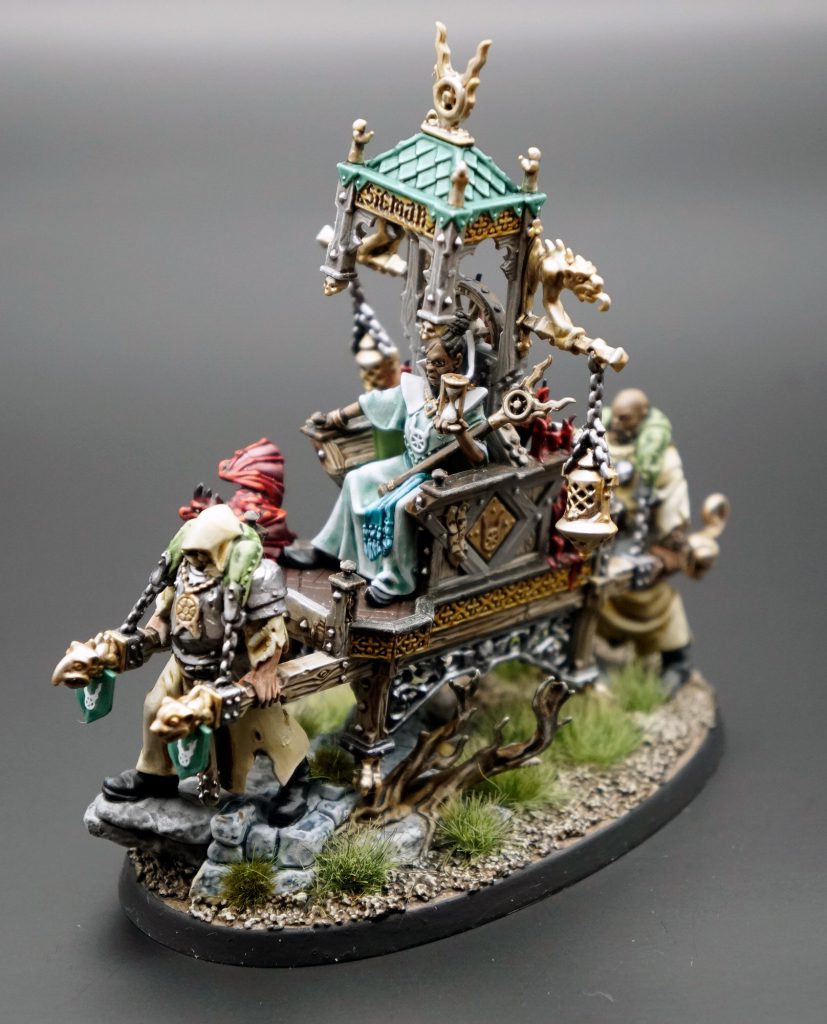
Remember Zenestra? How she was pretty much a big deal in all this? Were you looking forward to finding out how her story arc concludes? Well too bad, because you’re not going to find out here. She’s just, sort of, gone from the story now. We catch a little glimpse of some of her followers right at the very end of the book, but there is no real satisfying conclusion to be had to her part in the story. All we learn is that Zenestra has lost interest, and her followers seem to have just had enough.
Like the Ghyran side of the story, the narrative doesn’t really care all that much about the Dawnbringers anymore. It’s got other stories it wants to tell.
So, as it turned out, you can’t go planting whole cities in the middle of prime Khorne territory, and not expect to get a rise out of Khorgos Khul, lord of the Goretide and Khorne’s favourite mortal. The cannibalistic tide of Chaos barbarians turned their attentions to both the colossal Hammerhal and the newly-established Embergard at once, and split into two forces to attack.
Vandus Hammerhand was adamant that Khorgos Khul, his arch nemesis since the Realmgate Wars, was among the larger Khorne force in the north heading for Hammerhal, so he insisted on being the one to go out and face him. He claimed it was to draw the Goretide’s attention away from the city, but his motivation was clearly personal: He wanted to be the one to kill Khul. Talia Vedra suspected Vandus was not thinking entirely rationally, letting his hatred of Khul and thirst for vengeance get in the way of his reason, so she took her forces along too, to keep an eye on him.
Vandus, looking for Khul, hacked his way through scores of Khornite warriors, and it was not until he finally dismembered one of Khuls’ closest generals that he learned that Khul was not with this force at all; this drove him even madder with rage.
Meanwhile, Gavriel Sureheart was tasked with taking his forces east, towards Embergard, to reinforce it and take on the smaller force of Goretide assailing it. On the way they noted lots of strange magical seismic activity in the region.
Upon joining battle with the Khornite host, Gavriel Surehert discovered that Khul was actually commanding this force, not the one Vandus Hammerhand had rushed off to face. He can see Khul in the distance, but the Chaos lord was just standing aloof from the battle and not joining in. No warrior in sight was worth his time; he was looking for Vandus. The two men have developed an unnatural obsession for each other, and both long to finish off the fight that they started over a century ago. Vandus’ was the worthy skull that Korgus needed to offer Khorne in order to gain his long-awaited ascension to daemonhood.
Eventually Khul would get his wish. Upon realizing that Khul was not where he thought he would be, Vandus used the Star Bridge to join the fray near Embergard. Maddened by hatred and vengeance, Vandus called Khul out. The two spotted each other across the raging battle, face to face for the first time in decades.
Khul looked down at the man who had been the forefront of his thoughts for generations. With great disappointment he realised: Vandus was no longer a worthy soul. He was damaged and maddened by his obsession. To kill him would be no kind of glory at all. Khul walked away.
He set his eyes, instead, on Gavriel Sureheart, another lord celestant; one in his prime, not damaged and maddened by vengeance and one too many reforgings. Sureheart, despite having only half a sword left, managed to dispatch Grizzlemaw, Khul’s daemon dog, and puncture Khul’s throat, but, in retaliation, with a swing of his reality-splitting Axe of Khorne, Khul relieved Sureheart of his head (and soul). He finally obtained his worthy skull.
Khul was then transfigured in the presence of everyone. He glowed with hell-light, skulls begin raining from the sky as Khul took on a few different ghastly shapes before blowing up into a mass of gore. And that was the last we see of him. Speculation abounds about whether he has ascended to daemonhood, or whether he’s just dead. Either way, Vandus didn’t get the satisfaction of ending his mortal enemy, and he finally snapped.
Later on we get to see Ionus Cryptborn lead his broken friend, Vandus, to some sort of prison complex for over-reforged Stormcast. I’m guessing the lines of cell doors with tortured screams and crackling flashes of thunder coming from behind makes up the Ruination Chamber retirement village we’ve been hearing about.
It’s a pretty awesome conclusion to the Vandus/Khul saga. How better to illustrate the ugliness of revenge and obsession? Indeed, this is probably no conclusion at all. I now really need to see a show-down between daemon prince Khul and a gnarled Reclusion Vandus.
We then went to another part of Aqshy, not so far away, where a Darkoath warband schemed with a disguised Vermin Lord Screech of the Skaven. Archaon and the Great Horned Rat were now conspiring to corrupt key arcane ley lines throughout the mortal realms with warp stone.
The Darkoath were uneasy about working with the rat men. Indeed, they’re uneasy about working with Arachon, or the Chaos gods, or anyone else for that matter. The Darkoath have major trust issues. And it’s not hard to see why; these were the guys Sigmar abandoned during the Age of Chaos when he locked himself away in Azyr, leaving everyone else to fend for themselves.
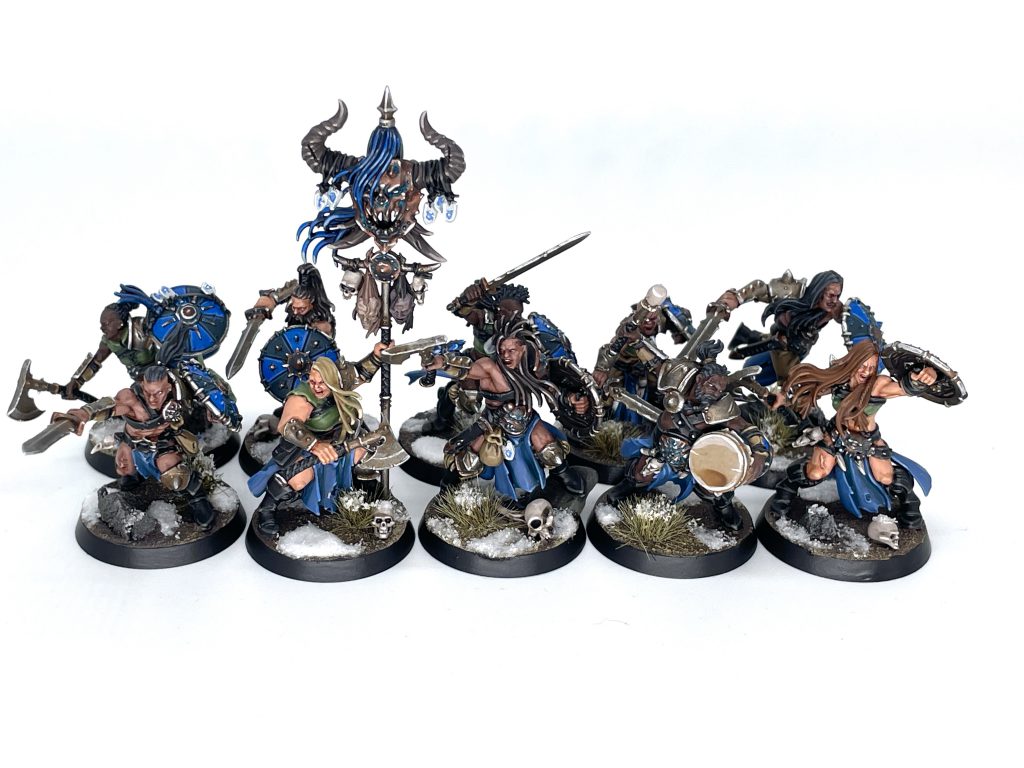
This left the tribes with a stark choice: Join the forces of Chaos, or die. The Darkoath took the first option, but reluctantly. Their mistrust of all gods is pronounced, especially for the likes of Gunnar Brand, who wants as little to do with them as possible. He reluctantly swears oaths to the Ruinous Powers in the understanding that they will grant him boons and strength to achieve his own agendas in the realms.
Trust is a massive part of Darkoath culture. Sigmar’s betrayal lives on in their ancestral memory. All of these trust issues from their past then surface in the power of the oath, whereby chieftains and warriors swear oaths to be victorious in battle, and severely punish those who break their vows. I wonder, then, how they got on in their alliance with the famously duplicitous and back-stabbing Skaven!
After a period of corrupting lay lines and doing the will of Archaon and the Great Horned Rat, Gunnar Brand became concerned that his fellow chieftain Urjox had not been heard from for quite some time. Along with rival-ally Warqueen Tanari, daughter Singri, and other trusted lieutenants, Brand went off to investigate what had happened.
Upon coming to Urjox’s mountain home, he found the aftermath of a bloody war. Skaven and Darkoath bodies lay strewn all over the place. It was all too clear that this was the intended fate for all Darkoath who worked with the rats.
Enraged by the deaths of their kin, Brand and his companions moved to take their revenge on the rat men, attacking Chakrik’s Folly, a nearby Skaven cave-fortress. It was as they wound their way through the Skaven caves, exterminating rats along the way, that they were met by Skreech, now revealed in his full glory and ready to bombard Brand and his crew with exposition. Now a Bond villain, Skreech explained his plan at great length to Brand instead of just killing him. “I’ve been expecting you, Mr. Brand.”
The Brand tribe were soon overwhelmed by waves of rats and a ton of new and terrifying weaponry. Soon, the land began to tremble and something cataclysmic happened; Brand, along with his closest lieutenants, barely managed to escape with their lives as the mountains around them crumbled.
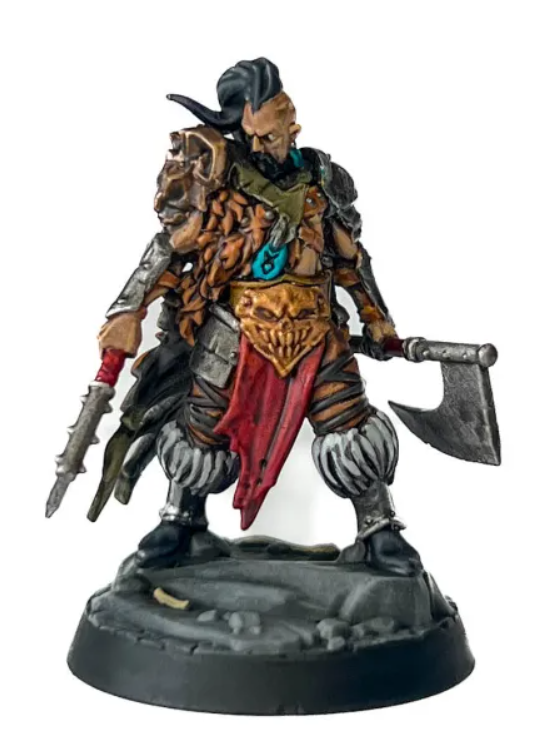
The joint plans of the Great Horned Rat and Archaon The Everchosen were realized. Blight City, the capital of the Skaven’s inter-realm empire, burst through the ground, into the reality of Aqshy, and now sits menacingly on the doorstep of Embergard. Welcome to 4th edition!
A Twin-Tail of Two Cities
This book was a typical campaign book. It had a lot of admin to do: Introduce the new Darkoath model range whilst getting rid of the Phoenix Guard; introduce us to Abraxia; set up Vermindoom; transition the game to fourth edition. There were times when it wasn’t all that coherent – but there was some really nice stuff in there regardless.
Despite feeling out of place, the Phoenicium section was a really good read. The next step in the Vandus/Khul saga was also amazing. It’s one of the first stories that AOS told, and it’s still interesting and engaging all these years later.
This book wasn’t the thrilling conclusion to the Dawnbringer crusade story that I hoped it was going to be. It nowhere near compares with previous campaigns such as Broken Realms, and it just forgets that it’s actually supposed to be a story about Dawnbringers. But it has a ton of cool stuff in it, and is definitely worth the read.
Have any questions or feedback? Drop us a note in the comments below or email us at contact@goonhammer.com. Want articles like this linked in your inbox every Monday morning? Sign up for our newsletter. And don’t forget that you can support us on Patreon for backer rewards like early video content, Administratum access, an ad-free experience on our website and more.
